We’ve all experienced it – the quickening of your heartbeat, the butterflies in the belly, the rapid breathing and the cold sweat that breaks out all over the body. This is the natural response our bodies have to imminent danger or threat and it’s a perfectly normal reaction that has kept us from harm as a species. However, in today’s world, the risk of being chased by a lion or eaten by a bear are remote at best and this protective reaction (also known as the ‘fight or flight’ response) is largely limited to daily stressors in our everyday lives.
Intermittent or infrequent bursts of adrenalin and cortisol in response to danger can heighten brain function and boost the immune system, but prolonged exposure can do a lot of damage over time. The adrenal glands, located above each kidney, are responsible for releasing adrenalin and cortisol. These glands can become fatigued with continued stress, and this in turn can lead to more serious problems down the track.
So, what can we do to negate the effects of adrenal fatigue and restore our bodies and minds to a state of balance? Firstly, make time to relax and ensure that this time is free from distraction (think laptops, phones, television) and do this regularly. Most of us feel time-poor at the best of times, but think about what you can substitute or give up to create this time for yourself – can you watch less television, or perhaps spend 10 minutes less on email or Facebook? Devoting this time for yourself is not just a luxury, it should be at the top of your to-do list (and strangely, it may even free up more time in your day as you approach it from a place of calm and centeredness!).
The regular practice of yogic postures can be a wonderful way to lower stress when you feel overwhelmed, and as preventative medicine. Besides changing the balance of the nervous system, asana (the physical postures) reduces muscle tension. From a yogic perspective, stress can cause muscle spasms and the reverse is also true: tight muscles can raise your stress levels.
Below are a few pointers to get you started on your way. Try to ensure that you are free from disturbances, in a quiet, dimly lit room and if you like, perhaps light a candle or play some soothing music. Make sure that you are not too cold and that you are dressed comfortably. Have a selection of props if you need them – cushions, a bolster, blocks, or a blanket are great for helping the body to feel supported and relaxed. If your nervous system is too aroused from stress or overstimulation, however, you may not be able to settle into relaxation straight away. In that case, a few warm up postures or a gentle round of sun/moon salutations can be helpful in allowing you to burn off some steam, allowing you to feel more prepared for deeper relaxation.
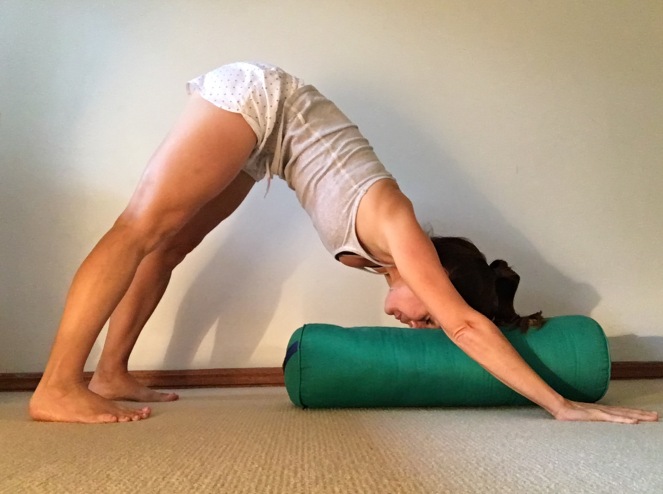
- Supported Downward Facing Dog (Adho Mukha Svanasana)
In this pose, the head is lower than the heart. This allows the brain to be bathed in blood, calming the brain and gently stimulating the nerves. It stretches the entire back body, especially the arms, shoulders, hips hamstrings, calves and Achilles tendon. In this variation, the head is supported to increase the calming effect and to gently begin quieting the mind. Stay here for around a minute, or as long as you feel comfortable.
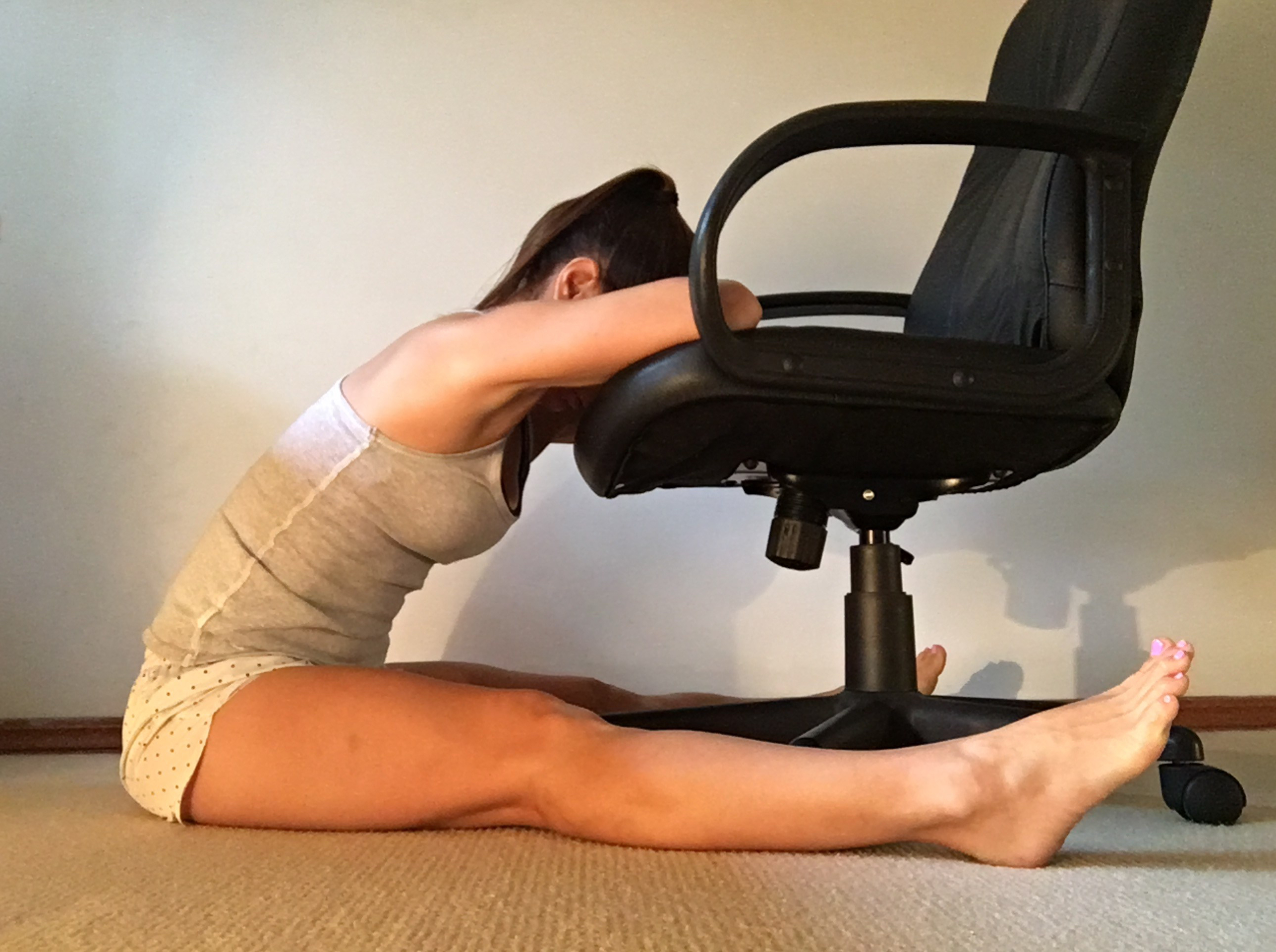
- Supported Forward Bend (Paschimottanasana)
Start by sitting with straight legs (you can roll up a towel or blanket to put under the knees if the hamstrings are tight). Bend from your hip joints without rounding your back and slowly fold forward.
Fold your arms, with elbows out to the sides, and stack your hands on the prop. Then rest your forehead on your hands, gently tugging your eyebrow skin down towards your eye (the direction of the ‘energy’ of the eyebrow skin is helpful in promoting a calmer state of mind). Stay for two or three minutes, keeping your legs lightly active.
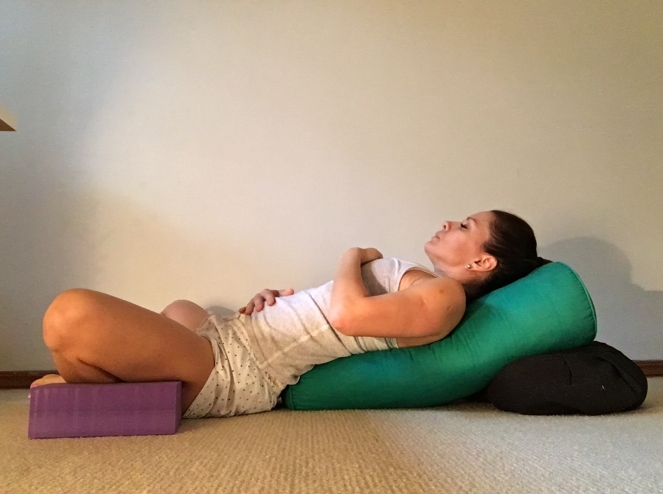
- Supported Cobbler’s Pose (Supta Baddha Konasana)
Place a block or cushion at desired height under far end of bolster to give a slight incline of support to the spine. Sitting with sacrum and hips against the end of the bolster, lay back and recline over the bolster. With knees bent and toes touching, open knees and provide either blocks or folded blankets as support under the knees. Bring your hands onto the lower abdomen and the chest as you begin to deepen the breath. Focus on the gentle expansion of the belly as you inhale, and the contraction as you exhale. Deep abdominal breathing is a wonderful way to calm the nervous system and begin to experience the ‘rest and digest’ response. Remain for here for as long as you like.
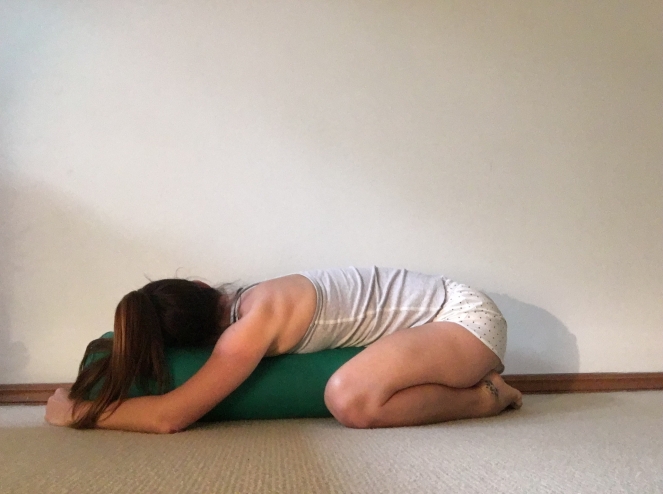
- Supported Child’s Pose (Balasana)
Sit on your heels and place a bolster (pillow, couch cushion, or rolled blanket) lengthwise between your thighs. Exhale and lay forward onto the bolster, turning your head sideways and let the bolster support the full weight of your head. Let your arms to relax to the ground, and extend them forward if that feels comfortable. Close your eyes and focus on your breath. Half way through the pose, turn your head the other way so that your neck receives an even stretch.
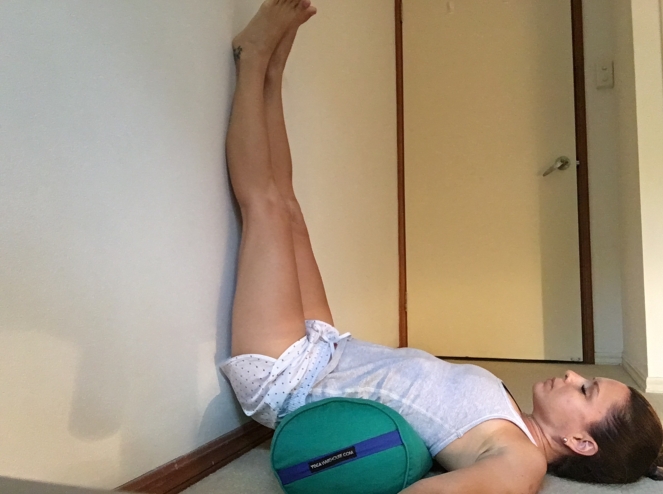
- Legs up the wall (Viparita Karani)
Find an open space near a wall and sit next to it with your feet are on the floor and the left side of your body touching the wall. Lie on your back, making sure that the back of your legs press against the wall, and that the soles of your feet face upwards. It will take you a little bit of movement to get comfortable in this position. Place your buttocks a little away from the wall or press them against the wall. Make sure your back and head are resting on the floor. You will find that your body forms a 90-degree angle. Lift your hips up and slide a prop under them. Allow the back of the neck and shoulders to soften and begin to deepen your breath. You can let the legs slide open to a V-shape if that feels better in the hips, or use a belt/strap around the legs to keep the together, enabling you to relax more. Stay for 5 – 10 minutes.
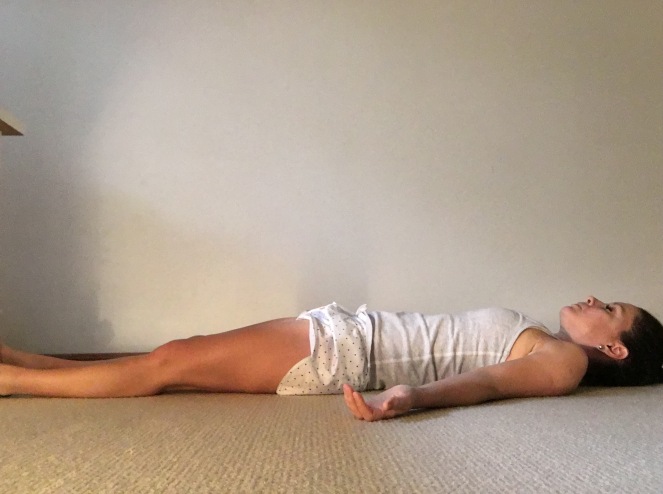
- Corpse Pose (Savasana)
Lay down on your back on the floor, supporting yourself in any way that feels good – you can roll up a blanket for under the knees or place a pillow under the head. Ensure that the neck stays long, and that the chin and forehead are in line with each other, or that the chin is slightly lower than the forehead. (The position of the head is crucial in Savasana and other relaxing poses as an elevation of the chin can be stimulating and can undermine some of the relaxing effects of the pose). Allow your body to soften and relax, being conscious of your breath as you maintain a gentle awareness of the whole body. Stay for as long as you need.
References:
“Yoga as Medicine – the yogic prescription for health and healing” by Timothy McCall, M.D. Bantam Books, August 2007. Pages 58-59, 65
“Asana Pranayama Mudra Bandha” by Swami Satyananda Saraswati. Bihar School of Yoga, 1996. Page 526
